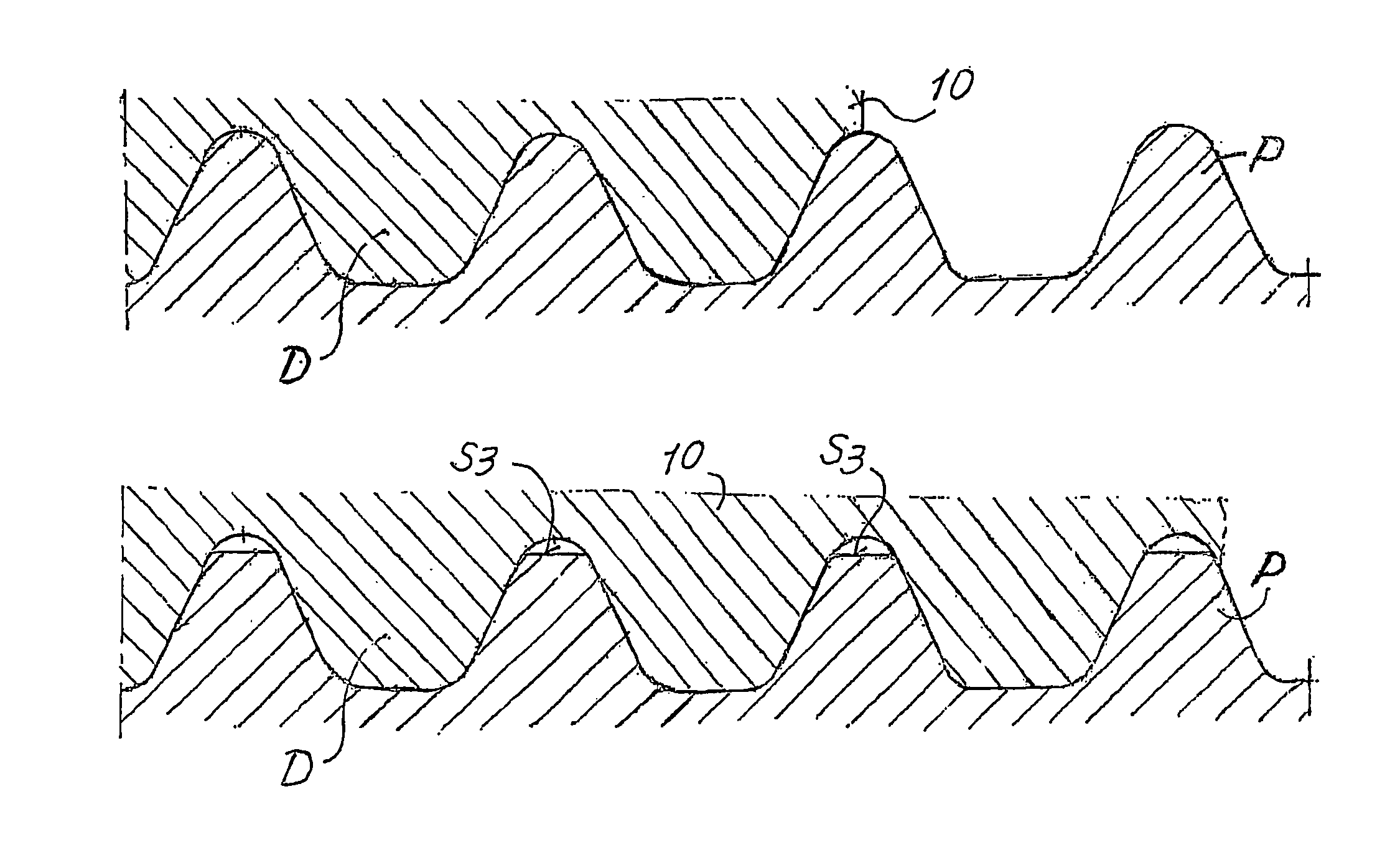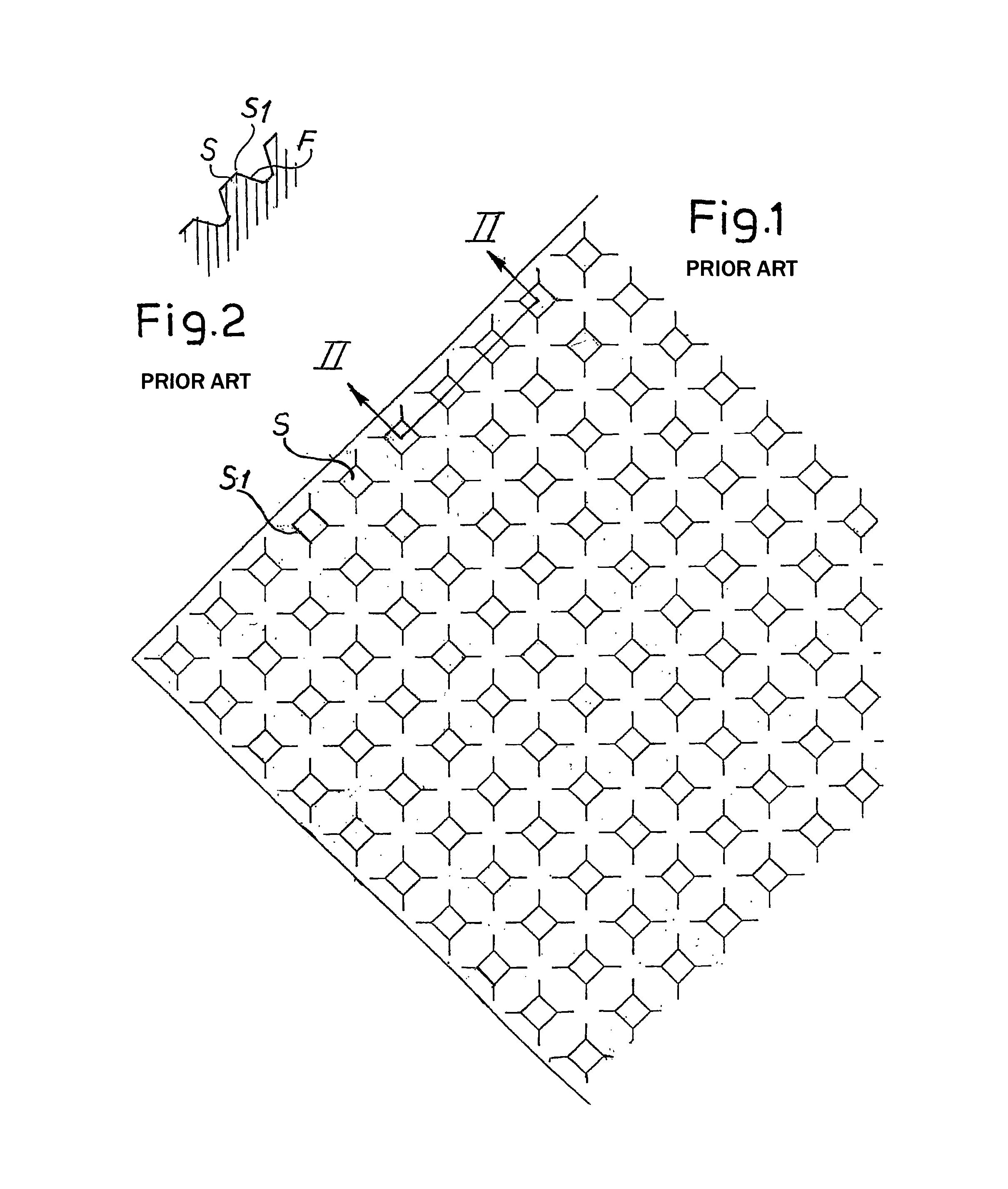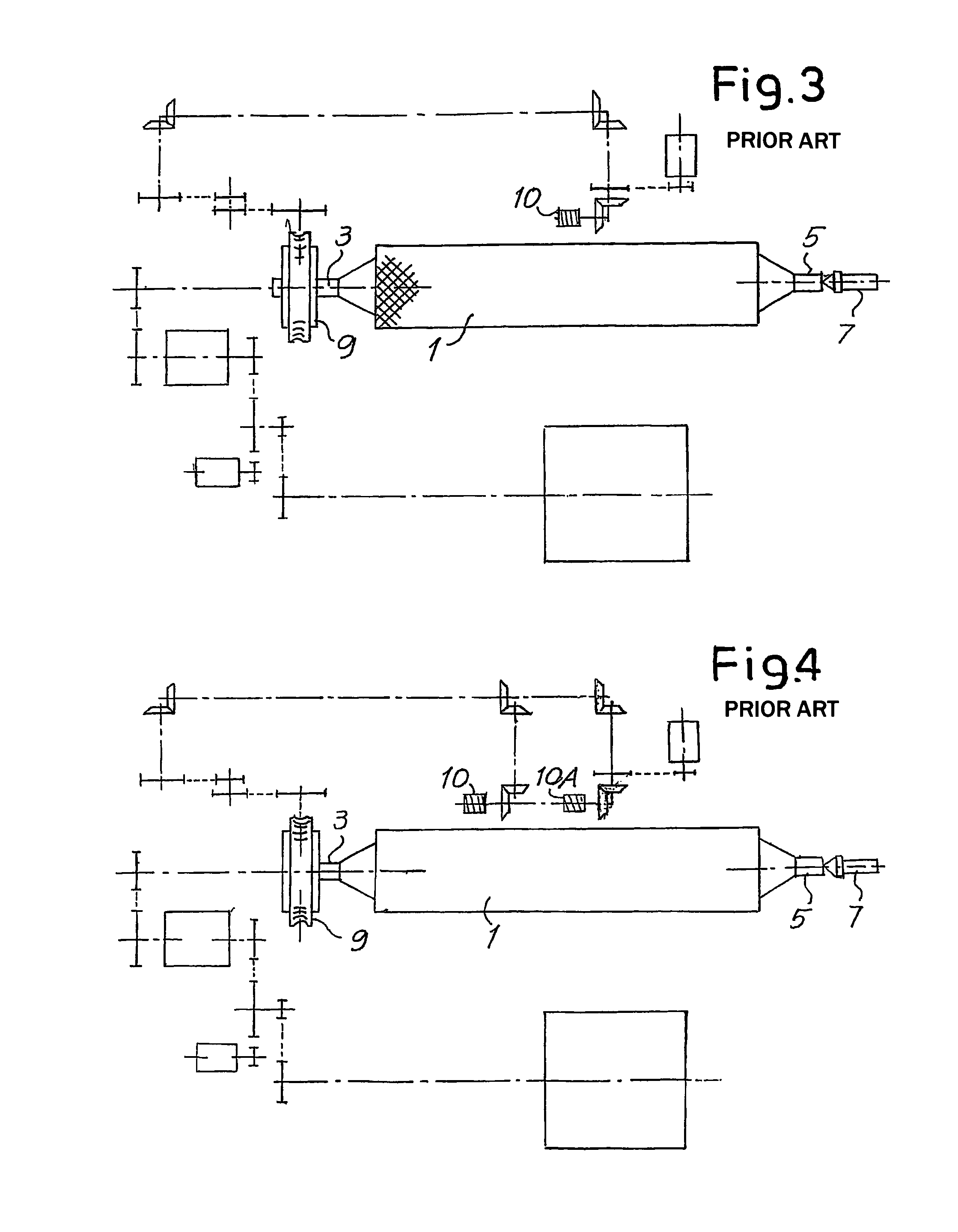Embossing roller and method for the manufacturing thereof
a technology of embossing rollers and manufacturing methods, which is applied in the direction of manufacturing tools, roads, roads, etc., can solve the problems of increasing the cost of the individual embossing roller production, and long processing operations that involve these techniques. , to achieve the effect of reducing the cost and production tim
- Summary
- Abstract
- Description
- Claims
- Application Information
AI Technical Summary
Benefits of technology
Problems solved by technology
Method used
Image
Examples
Embodiment Construction
[0053]FIGS. 1 and 2 show the plane development and cross-sectional view of a roller machined with a double pass of a hob and subsequently ground, according to what is described in the Italian patents Nos. 1,222,255 and 1,222,256.
[0054]In order to carry out this incision, the roller 1, which has previously been ground, is set with the shanks 3 and 5 between the tailstock 7 and the spindle of a lathe, to which the spindle is fixed with respect to a gear 9, which imparts the motion of rotation through a gear transmission of a known type. The principal members of the lathe are represented schematically in FIG. 3 and are not described in greater detail, since they are known to those skilled in the art.
[0055]Designated by 10 is a hob that carries out, on the cylindrical surface of the previously ground roller 1, with two or more successive passes and two different inclinations, a double series of helical grooves, which by intersecting with one another generate protuberances having the sha...
PUM
| Property | Measurement | Unit |
|---|---|---|
| convex curved shape | aaaaa | aaaaa |
| heights | aaaaa | aaaaa |
| shape | aaaaa | aaaaa |
Abstract
Description
Claims
Application Information
 Login to View More
Login to View More - R&D
- Intellectual Property
- Life Sciences
- Materials
- Tech Scout
- Unparalleled Data Quality
- Higher Quality Content
- 60% Fewer Hallucinations
Browse by: Latest US Patents, China's latest patents, Technical Efficacy Thesaurus, Application Domain, Technology Topic, Popular Technical Reports.
© 2025 PatSnap. All rights reserved.Legal|Privacy policy|Modern Slavery Act Transparency Statement|Sitemap|About US| Contact US: help@patsnap.com



